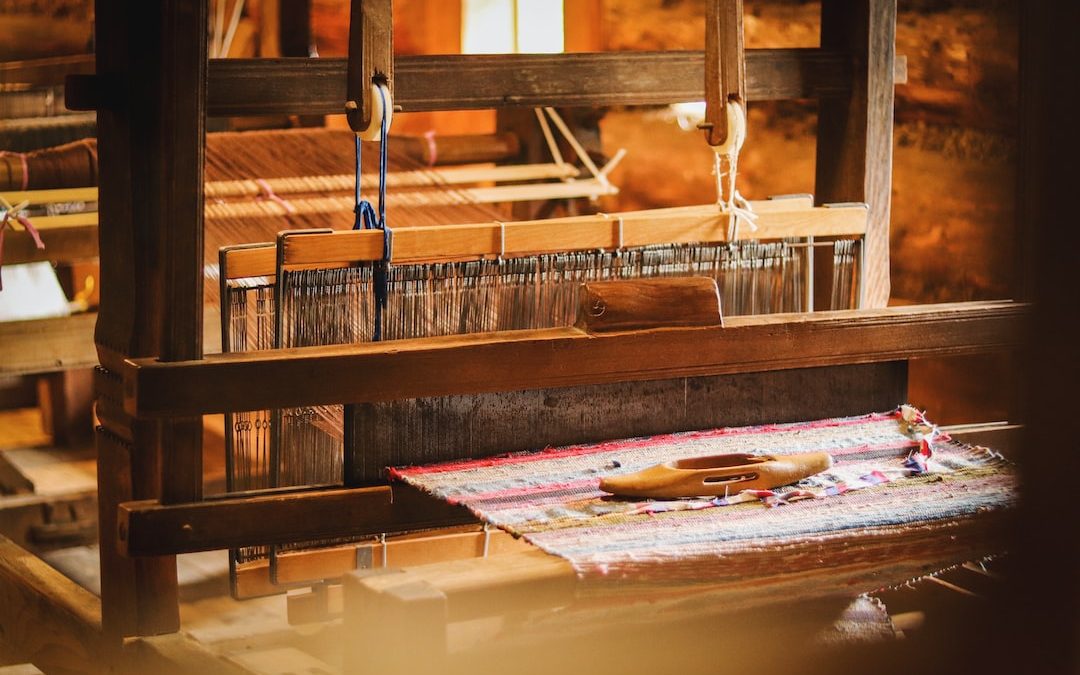Table of Contents
Understanding India’s Intricate Textile Arts
Introduction
India is a land of vibrant culture and long-standing traditions, and its textile arts are no exception. From the intricate hand embroidery of Kashmir to the delicate weaving of Gujarat, each region has its own unique style of textile art that has been passed down through generations. India’s textile arts are a reflection of its history, with each design and style telling its own story. In this blog post, we will explore some of India’s most intricate and beautiful textile art forms, from the intricate hand embroidery of Kashmir to the delicate weaving of Gujarat.
History of Indian Textile Arts
The history of India’s textile arts dates back centuries, with references to textile production being found in ancient Hindu texts. The earliest references to weaving and embroidery date back to the 4th century BC, when the ancient city of Mohenjo Daro was home to a thriving textile industry. In the centuries that followed, India’s textile industry grew and flourished, with each region developing its own unique style of textile art.
Kashmiri Hand Embroidery
Kashmiri hand embroidery is one of the most intricate and beautiful textile art forms in India. This art form dates back centuries, with intricate embroidery designs being used to embellish shawls, saris and other garments. The embroidery is done by hand and requires great skill, with each design being unique and beautiful. The most popular designs include floral motifs, paisley patterns and traditional Kashmiri motifs.
Kalamkari Painting
Kalamkari painting is another traditional Indian textile art form, dating back to the 16th century. This art form involves using a kalam (a type of pen) to draw intricate designs onto cotton or silk fabrics. The designs are then painted with natural dyes, including indigo, madder root and turmeric. The designs often depict scenes from Hindu mythology, and are used to decorate saris, wall hangings and other fabrics.
Bandhani Tie-Dye
Bandhani tie-dye is one of the oldest textile art forms in India, dating back to at least the 12th century. This art form involves tying sections of fabric with strings or threads before dying them in vibrant colours. The pattern created by the tied sections of fabric is then revealed after the dye has been applied. Bandhani tie-dye is most commonly used to create vibrant saris, but can also be used to create other garments and accessories.
Kantha Stitch
Kantha stitch is a type of embroidery that is most commonly used to create quilts and bedspreads. This art form involves layering multiple pieces of fabric and then stitching them together with a running stitch. The stitch is used to create intricate designs, often featuring floral motifs and traditional Indian designs. The quilts created using kantha stitch are often used as bedspreads and wall hangings.
Block Printing
Block printing is a traditional Indian textile art that involves using carved wooden blocks to print patterns onto fabric. The blocks are dipped in dye and then pressed onto the fabric, creating intricate and beautiful designs. Block printing is most commonly used to create saris, wall hangings and other garments, with the most popular patterns being floral motifs and geometric designs.
Chikankari Embroidery
Chikankari embroidery is a type of hand embroidery that is most commonly used to decorate garments such as saris and lehengas. This art form involves using a needle and thread to create intricate and delicate designs, often featuring floral motifs and traditional Indian designs. The embroidery is usually done in white thread on a white fabric, creating a subtle and elegant effect.
Phulkari Embroidery
Phulkari embroidery is a type of embroidery that is most commonly used to decorate garments such as saris and lehengas. This art form involves using brightly coloured threads to create intricate designs, often featuring floral motifs and geometric patterns. The embroidery is usually done in colourful threads on a white fabric, creating a bright and vibrant effect.
Patola Weaving
Patola weaving is a type of weaving that is most commonly used to create saris and other garments. This art form involves using a loom to weave intricate and colourful designs, often featuring floral motifs and geometric patterns. The fabric is usually woven using silk thread, which gives it a smooth and luxurious feel.
Banarasi Weaving
Banarasi weaving is a type of weaving that is most commonly used to create saris and other garments. This art form involves using a loom to weave intricate and colourful designs, often featuring floral motifs and geometric patterns. The fabric is usually woven using silk thread, which gives it a luxurious look and feel.
Summary
India’s textile arts are an integral part of its culture, with each region having its own unique style of textile art. From the intricate hand embroidery of Kashmir to the delicate weaving of Gujarat, India’s textile arts are a reflection of its history and culture. This blog post has explored some of India’s most intricate and beautiful textile art forms, from the intricate hand embroidery of Kashmir to the delicate weaving of Gujarat. Each of these art forms is steeped in tradition and has been passed down through generations.












